Strengthen and stretch your entire body with this energizing sun salutation. Below, I’ll walk you through how you can do this traditional sequence to soothe your mind and keep your body in shape.
Sun salutations, set sequences performed in Ashtanga yoga, combine movement and breath to strengthen and stretch the entire body. They are typically performed at the beginning of class, although they could be said to be mini workouts of their own!
Surya Namaskara B extends the flow of the first sun salutation, Surya Namaskara A. The sequence combines the three principles of yoga: physical poses (āsanas), conscious breathing (prānāyāma), and a sense of meditation or inward reflection (dhyani).
Learning how to do the sun salutation sequences before joining a group class will help you find a greater sense of confidence, freedom and ease within the yoga structure. This is a wonderful boost for mind, body and spirit.
What Is Ashtanga Yoga?
Ashtanga yoga is a traditional, dynamic, and strenuous yoga practice that combines breath and movement to build internal heat and purify the body. This style of yoga is excellent for people who want to build strength and tone-up.
Why Salute the Sun?
Just as the sun gives life to the earth, the sun salutation distributes prana (Sanskrit for “life-force”) throughout the body. Traditionally, the sun salutation is done first thing in the morning to welcome the day and give thanks for all that we are open to receiving.
3 Tips for Improving Your Sun Salutations
Move with the breath. Each Ashtanga sequence combines mind, body, and breath. One pose seamlessly transitions into the next, in a continuous, rhythmic flow that builds energy and heat. Allow your breath to guide each movement; inhale fully during poses that open the body, and exhale completely as the following pose contracts the body.
Don’t overstretch. As the body builds heat, the muscles will begin to relax, and you may start to feel more flexible. This is especially true if you are practicing yoga in a heated studio. Remember that sun salutations are the perfect balance of strengthening and stretching. While it might feel nice to go deeper into the poses, over-stretching does more harm than good. Keep your abdominals engaged and use the support of your muscles to refine each pose.
It’s your practice. Stop comparing yourself to yoga teachers, Instagram yogis, or other students in your class. The time you spend on your yoga mat is for you alone, to connect with your body and bring a meditative state to your mind. Move at a pace that feels good for you, rest in child’s pose as needed, and never feel under pressure to advance a pose if you’re not comfortable with it.
How to Do a Sun Salutation
1. Stand in Mountain Pose with your feet together and your arms down by your side. Lengthen the crown of the head to the ceiling. Take 3 deep breaths.
2. Inhale, bend your knees, and sit your hips back into Chair Pose. Extend the arms straight overhead and reach through your fingertips. Pull your navel towards your spine.

3. Exhale, fold at the hips into Standing Forward Fold, and place the hands to the floor on either side of your feet. Allow the knee to remain bent if your hamstrings are tight.
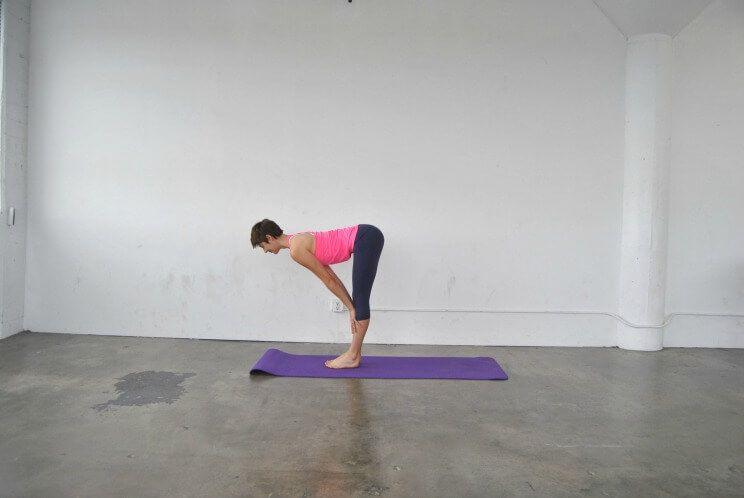
4. Inhale, lengthen your spine into Flat Back Position, bringing your fingertips to your shins. Keeping the abdominals engaged, reach the crown of the head forward and the tailbone directly back.
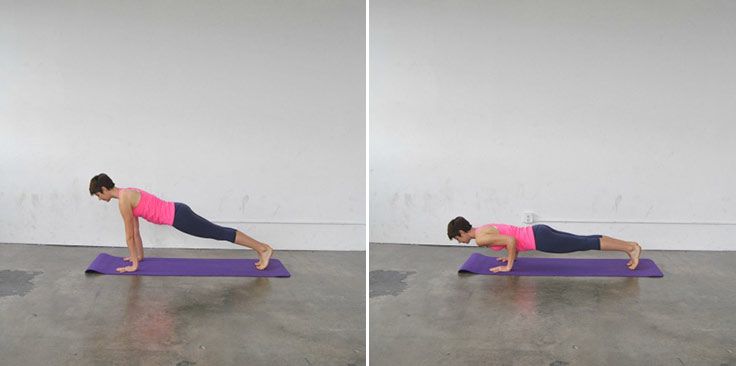
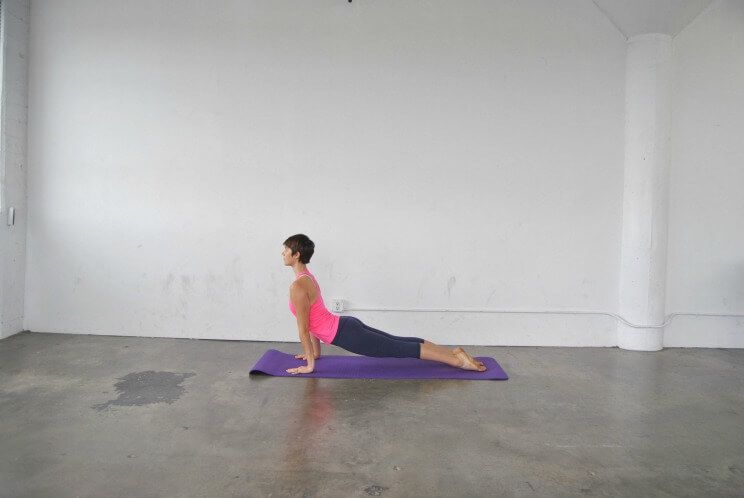
6. Inhale, draw your chest forward and straighten your arms into Upward-Facing Dog. Open your heart to the sky while pressing down through the tops of the feet. The legs are strong and active.
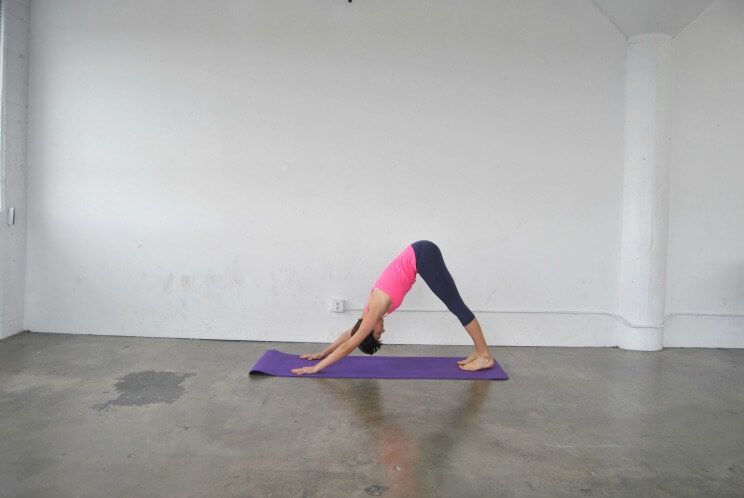
7. Exhale, lift the hips and shift the weight back onto the soles of the feet in Downward-Facing Dog. Ground down through your hands and draw your shoulders away from your ears.



10. Inhale, lift into Upward-Facing Dog.

11. Exhale, press back into Downward-Facing Dog. Lift your belly and sit bones to the sky.
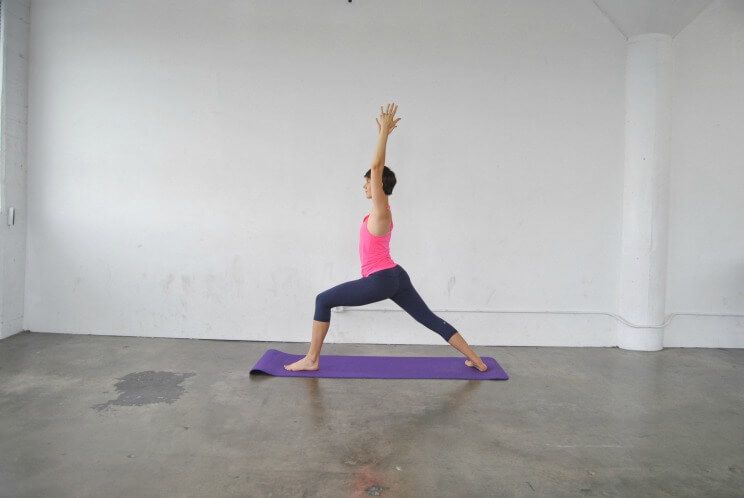
12. Inhale, step your left foot through your hands for Warrior I on the other side. The right heel reaches to the ground, with the heel slightly turned in and the toes pointing to a 45º angle. Lift your arms and gaze.

13. Exhale, step back into plank pose and repeat Chaturanga. Bend the elbows next to the ribs and lower your plank body towards the floor.

14. Inhale, lift into Upward-Facing Dog. Straighten the arms and fully engage your leg muscles.

15. Exhale, return to Downward-Facing Dog. Reach your heels towards the mat and press the weight back into the feet.

16. Inhale and step or jump forward, bringing your feet between your hands.

17. Lift your torso halfway into Flat Back Position, lengthening your spine and resting the fingertips on your shins.

18. Exhale, fold over into Standing Forward Fold. Bend your knees if needed and bring your nose to your knees.
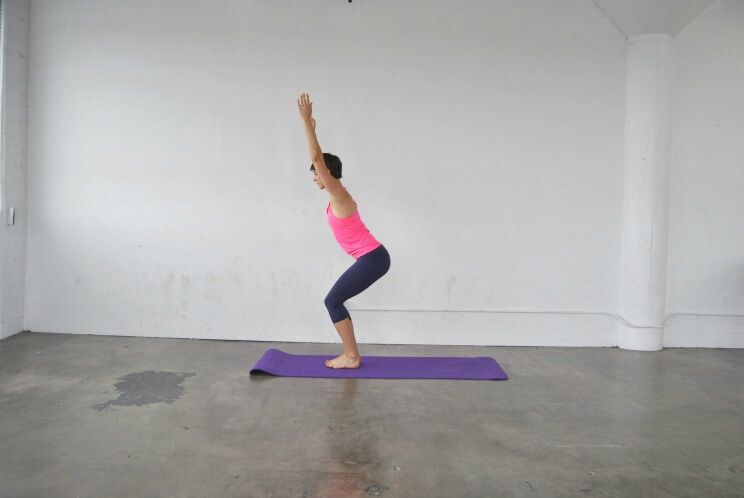
19. Inhale, come back into Chair Pose. Bring the big toes together, bend the knees and lower your hips. Extend your arms overhead and reach through your fingertips.
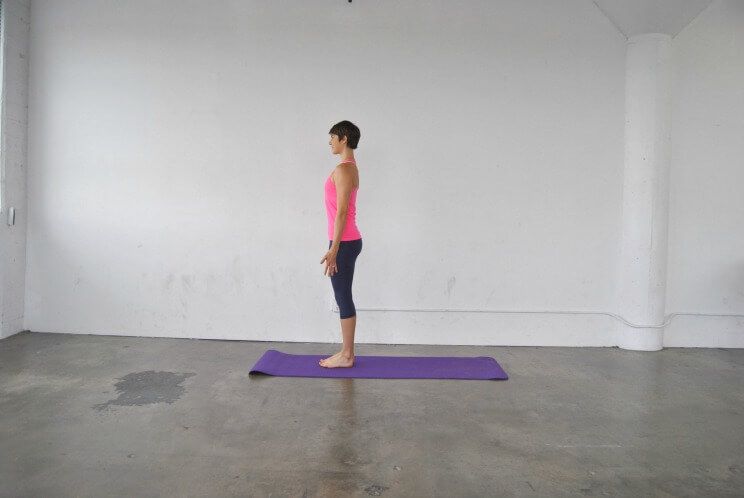
20. Exhale and stand up into Mountain Pose. Lengthen the spine and turn the palms to face forward.
This is one round. Repeat up to two-five total rounds, depending on your strength and understanding of the poses. Start slowly and increase your duration over time.

(Your Next Workout: 8 Yoga Hip Stretches That Feel Amazing)


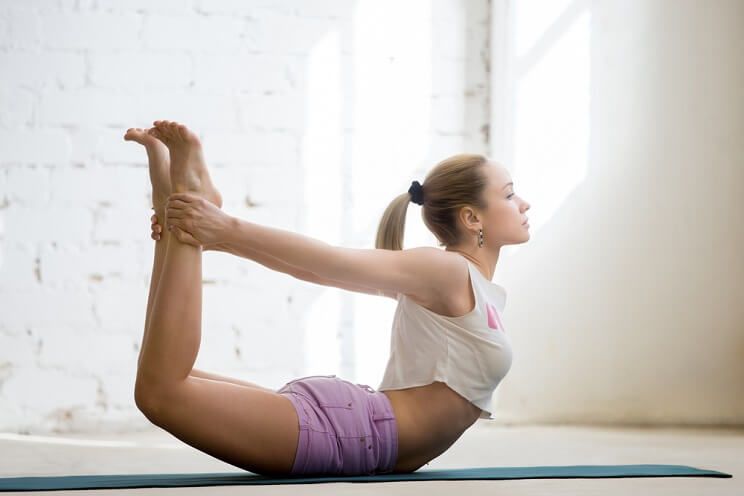

 Heavenly Coconut Lemon Bars
Heavenly Coconut Lemon Bars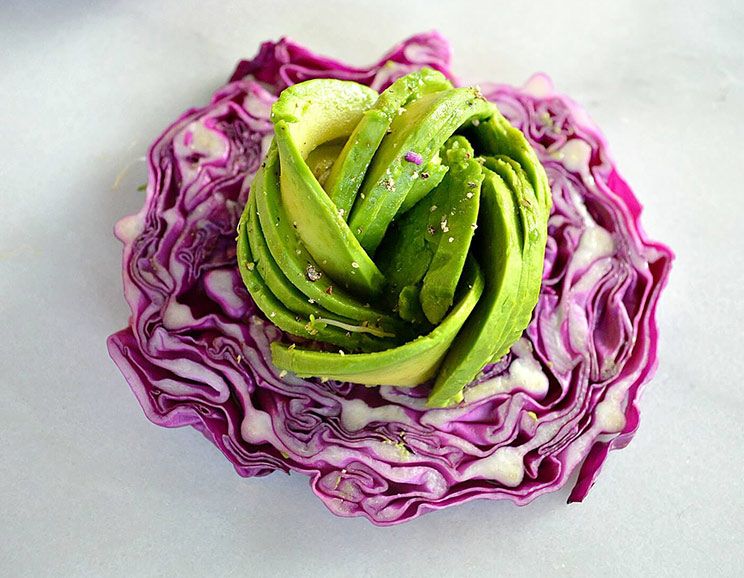

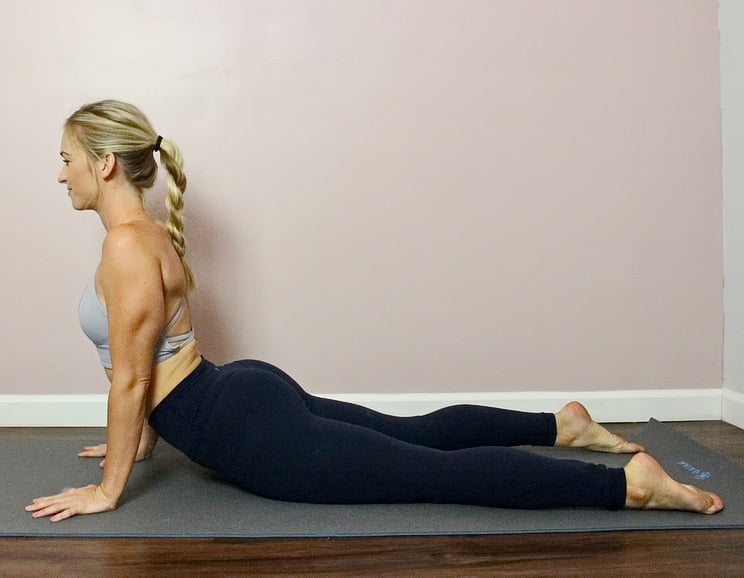
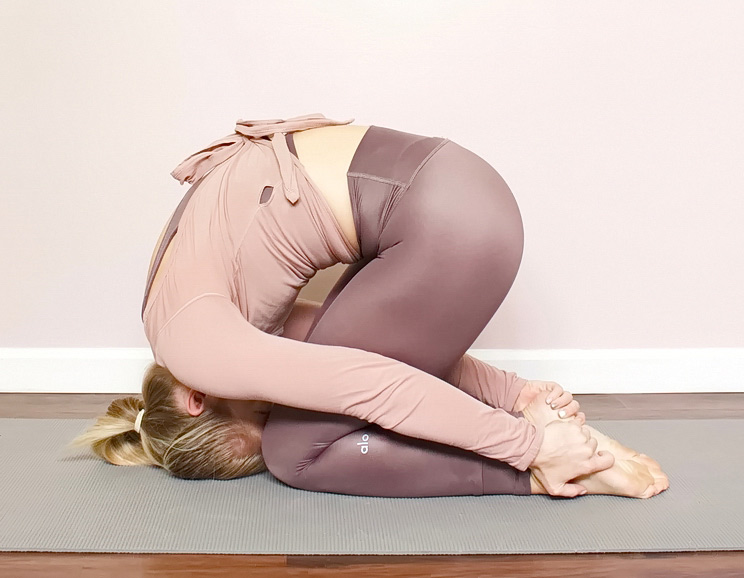

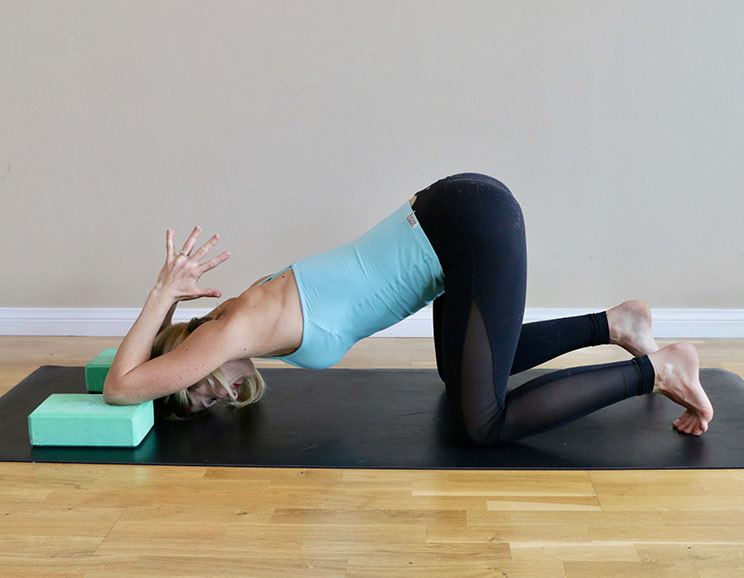
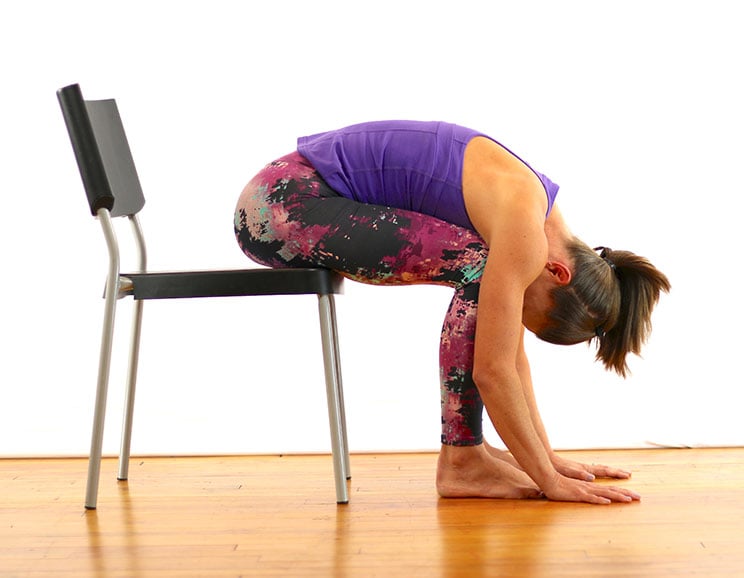
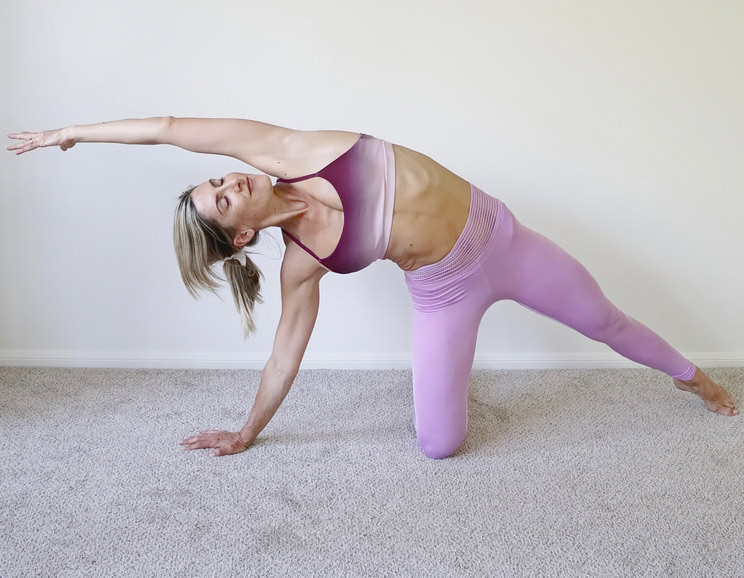

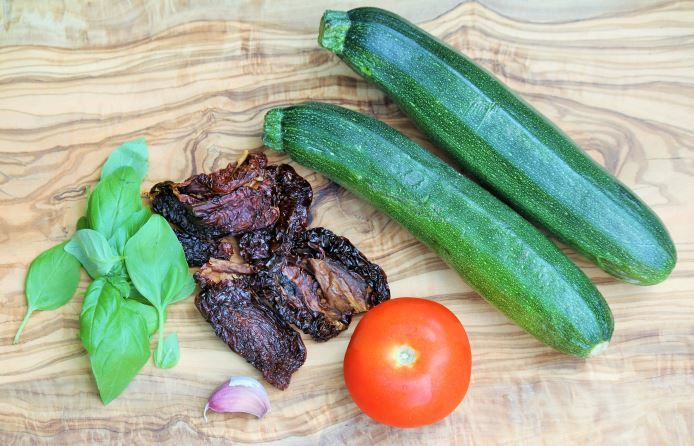
Show Comments